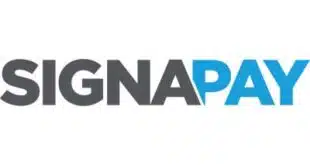The Covid-19 pandemic threatens to send merchant acquirers’ attrition rates through the roof. How bad is the damage, and how bad will it get?
Covid-19 is on the loose, and behind it The Grim Reaper of Retail has come calling. Brick-and-mortar merchants already were struggling with the e-commerce onslaught, but now the Covid-19 pandemic has made their problems much worse—and merchant acquirers are feeling their pain.
Merchant-acquiring consultancy The Strawhecker Group estimates merchant-account attrition at 23.6% for 2020’s first quarter (“Trends and Tactics,” this issue), one percentage point higher than in 2019’s fourth quarter.
Covid-19, however, didn’t really start biting the economy until mid-March. Now some acquiring veterans say attrition could jump towards 30%, though others say they haven’t yet seen a spike in attrition.
The retailing and restaurant industries, however, are full of dire predictions that many establishments shuttered by stay-at-home orders and related measures to control Covid-19’s spread won’t last much longer if they can’t reopen soon and get cash flowing again.
Reopenings are beginning to happen, cautiously, in the majority of states, but it’s unclear if struggling businesses can outlast the expected months—perhaps many months—it will take for the economy to recover its former mojo.
‘Significant Attrition’
“We’re seeing signs of significant attrition in the acquiring space across small, medium, and even large businesses as they fail and as the impact of long shelter-in-place and stay-at-home orders hits hard,” said Colleen Taylor, executive vice president and head of merchant services at San Francisco-based Wells Fargo & Co., one of the nation’s largest acquirers.
Taylor spoke at a virtual conference in mid-May sponsored by the Electronic Transactions Association, a Washington, D.C.-based payments trade group. She did not give numbers.
The travails of department stores, airlines and hotels, and small and mid-size retailers and restaurants—the core customers of independent sales organizations and many other acquirers—have been well documented. In April, the investment bank UBS estimated that up to 20% of the nation’s restaurants could close for good because of the pandemic.
Citing Covid-19, one big chain, Steak n Shake, permanently closed 57 locations, and Potbelly said it might have to close 100 of its sandwich shops.
‘The Rear-View Mirror’
Clearly, merchant acquirers have sailed into the attrition danger zone. The big question is, how bad will it get?
The Strawhecker Group gets anonymized data from 33 acquirers on nearly 4 million small and mid-size merchants to generate reports about attrition and other industry trends. Josh Istas, director of Omaha, Neb.-based TSG’s Acquiring Industry Metrics service, says February-to-March attrition levels rose 40% this year from the same period in 2019. March, of course, was when many state restrictions on business activity took effect.
But attrition can be hard to pin down because of its ever-changing nature. “The tricky part with attrition is, we’re always looking in the rear-view mirror,” says Istas.
Attrition, of course, is a normal occurrence in the acquiring industry. Processors do their best to minimize it because finding and approving new merchants is costly, and it can take time before a new merchant account becomes profitable.
Competition is a big driver of attrition as merchants often jump ship for another payment provider that offers lower discount rates and fees, a better terminal, or a more extensive menu of business-management software.
Then there are the inevitable business failures, even in the best of times. Acquirers also close some accounts because of fraud or rules violations, and sometimes a merchant will just go dark—cease submitting credit and debit card transactions without canceling the merchant account—and then resume after a period of time.
Some payments executives say the industry’s usual white-hot competition has cooled off a bit as acquirers turn their attention to helping their struggling existing merchants in any way they can. That means the business-failure component of attrition is taking on greater importance, which has acquirers closely monitoring the tea leaves.
Kevin Jones, chief executive of Nashville, Tenn.-based Celero Commerce, an ISO and business-management technology provider with 28,000 merchants generating $9 billion in annualized pre-Covid payment volume, shares data with six payments CEOs who collectively monitor industry trends. Some 25% to 38% of these executives’ merchants were closed as of late April, figures he says conform with reports from other firms that monitor the industry.
“That just brings up the question of how many will reopen. We personally estimate about half of that reopening,” Jones says. In other words, up to one-fifth of merchants could become permanent casualties of Covid-19.
At Celero, Jones is bracing for attrition of merchant accounts to possibly hit 30% compared to the company’s usual 17%-18% range. But Jones expects volume attrition of only 10%. That’s a sure sign the smallest merchants generating the least payment volume are experiencing the highest rates of failure.
And that’s especially sad for fans of local color—the retailers, family-run restaurants, bars, music and entertainment venues, and other establishments that distinguish one city or small town from another. “They’re the fun places to go—the local brewery, the local shop,” Jones says.
Deceptively Low
Other executives say attrition so far is still within normal ranges, but they’re keeping a close eye on trends.
Robert O. Carr, CEO of Beyond, a Princeton, N.J.-based ISO and provider of other payment services, says that, as of early May, fewer than 50 merchants had called in since mid-March to terminate processing, the majority of them restaurants. But that number is deceptively low.
“Even if we said every client that hasn’t processed in April or May was to attrite, that would be 13% attrition,” Carr tells Digital Transactions by email. “We consider this to be an unexpectedly low rate considering the magnitude of this event.”
Beyond serves 12,000 merchant locations with a pre-Covid run rate of $8 billion. It’s heaviest concentration is in restaurants, according to Carr.
CardFlight Inc, a point-of-sale technology provider that distributes its SwipeSimple product through 80 acquirers and ISOs, monitors industry trends from data generated by its 60,000-plus merchants. The New York City-based firm reported in early May that attrition rates caused by business failures so far were not abnormal. “Account closures on SwipeSimple as of today have not exceeded historical norms,” says CardFlight founder and CEO Derek Webster.
The hard-hit restaurant industry has proven to be “resilient, creative, and tenacious” by offering more order-ahead, curbside pick-up, and delivery options than it did before the pandemic, Webster says. “The bottom fell out really quickly with restaurants, but the market found its footing.”
Lazarus Effect
Indeed, industry optimists are earnestly hoping for a Lazarus effect—the resumption of payment processing from merchants that had shuttered because of the stay-at-home orders and related restrictions.
Atlanta-based acquirer EVO Payments Inc., which has a considerable U.S. presence even though most of its merchants are in Europe, said on its first-quarter earnings call that its active-merchant count declined by about 35% after Covid-19 hit, but many such businesses plan to reopen.
“We weren’t getting huge amounts of closure requests,” Brendan F. Tansill, president of EVO’s Americas segment, said on the May 8 call. “We were experiencing attrition levels that weren’t particularly elevated vis a vis other periods in our history. What we were hearing in many instances was those merchants were temporarily dormant and their expectation was to remain open.”
Tansill attributed much of the resumption to the federal government’s Paycheck Protection Program (PPP), a loan program aimed at keeping employees of struggling small businesses on the payroll.
Processors in the e-commerce space, which has boomed with malls and Main Street mostly closed, have fared better than their brethren with greater brick-and-mortar exposure.
“We didn’t have the verticals that really got crushed by Covid,” says Ralph Dangelmaier, chief executive of BlueSnap Inc., a Waltham, Mass.-based online processor and gateway. “We’ve had no attrition so far.”
But Dangelmaier would not be surprised if BlueSnap, which uses a software-as-a-service distribution model, gets grazed by the attrition bullet. That’s because the customers of BlueSnap’s customers are experiencing attrition.
“That’s what I see happening—because there’s less people working, there’s less [software] licensing to be had,” says Dangelmaier.
Helping Merchants
With the economy likely to remain in recession if not outright depression for months if not into 2021, acquirers say they are doing everything they can to help their merchants stay in business.
Tactics include fee waivers, aid in obtaining PPP loans, enhanced risk management to prevent losses, and the rollout of gift card programs to juice sales.
“The goal is really to keep the merchants in your portfolio really afloat, keep the relationship until the market comes back and we see the upswing,” says The Strawhecker Group’s Istas. “From an attrition standpoint, it’s too early to tell when that will be.”





